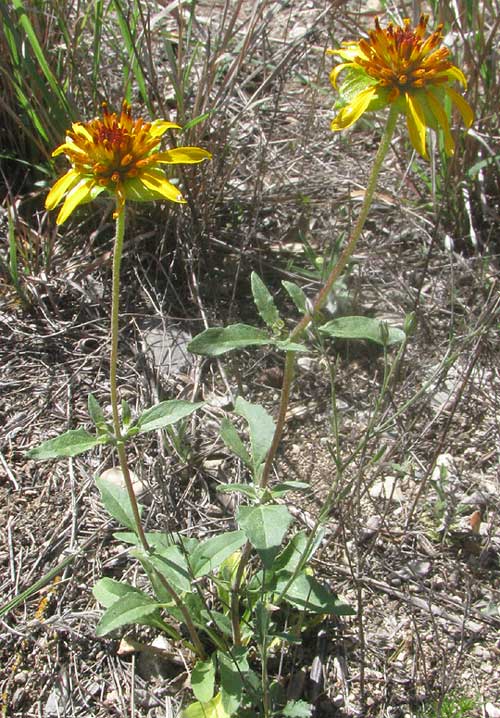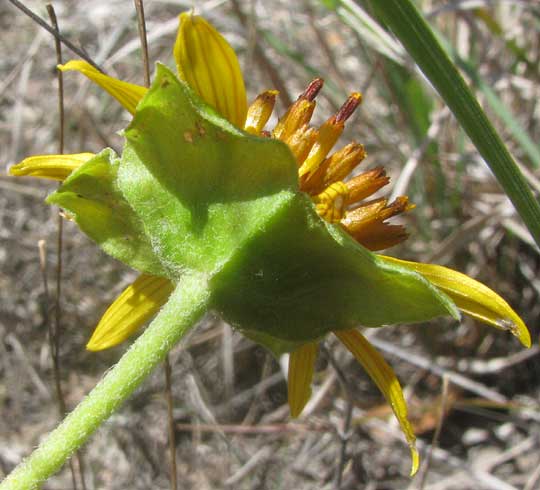Excerpts from Jim Conrad's
Naturalist Newsletter
from the April 21, 2013 Newsletter issued from the Frio Canyon Nature Education Center in northern Uvalde County, southwestern Texas, on the southern border of the Edwards Plateau; elevation ~1750m (~5750 ft); N29.62°, W99.86°; USA
SQUAREBUD DAISY
Below you can see a knee-high wildflower of which I've found only one example so far here:

At first glance this look like any number of yellow-blossomed Composite or Daisy-Family member, but even from several feet away you can see two unusual field marks for this species. First, notice that the disk flowers in the heads' centers are much larger than in most species. Also, check out what's shown on an opened head below:

The bases of the oversized, reddish-tinged disk flowers are partly enclosed within sharp-pointed, reddish-fringed bracts, or paleae. Most genera of composite flowers don't wrap their disk flowers in such bracts, so this is a good field mark.
However, you hardly need to see the oversized disk flowers wrapped in sharp bracts because of another feature that -- in terms of how composite blossoms are supposed to look -- is just amazing, and thus constitutes the best field mark of all: Each flower head wears below it a bowl-shaped "collar," as seen from below, below

Technically you would say that the outer four involucral bracts, or phyllaries, are expanded and grown together to form the collar. Such a feature is very unusual, though not unique to this species or genus.
Here we have what's sometimes called the Squarebud Daisy or Nerve-ray. It's TETRAGONOTHECA TEXANA, one of only four species of the seldom heard-of genus found in North America, and endemic only to a few counties here in southwestern Texas and arid northeastern Mexico. The online Flora of North America describes its habitat as "Sandy soils, often with mesquite," so probably in the more arid scrub and desert south and west of here the species is more common than here.
The name Squarebud Daisy derives from the flower bud's appearance when the four bracts of its "collar" wrap around the immature blossom forming a four-cornered, boxy affair.
This is a very nice find, and in a world so populated with look-alike yellow, daisy-type flowers, it's great to have a species with a single field mark so effectively announcing its identity.